-
Improving autonomous navigation in challenging conditions
Researchers work on developing an advanced sensor fusion system for the Department of Defense that will increase high-speed obstacle detection range; results of this work should open up new possibilities for deploying autonomous vehicles for missions that demand navigating at higher speeds in unstructured environments
-
-
App-enabled robocopters to bring supplies to Marines
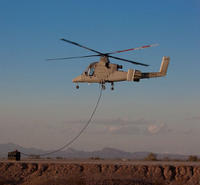
Marines running low on ammo may one day use an app on their digital handhelds to summon a robotic helicopter to deliver supplies within minutes; the Navy officials in charge of the program are seeking researchers who will develop threat- and obstacle-detection and avoidance systems, as well as autonomous landing capabilities that can operate across different types of aircraft
-
-
Helping UAVs to land safely in an emergency
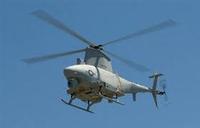
One obstacle to the wider use of UAVs in domestic missions such as law enforcement is the fact that UAV flight plans are set pre-flight, and if something goes wrong and they need to land they have no way to determining where the safest landing spot is; in most cases they just drop; engineers are developing a system which will allow UAVs sense and avoid other traffic and determine appropriate landing spots should the need arise
-
-
Tails help leaping lizards – and robots – stay in control

A new study examined how lizards manage to leap successfully even when they slip and stumble; the researchers found that lizards swing their tails upward to prevent them from pitching head-over-heels into a rock; the research pushed the boundaries of control in robotics in an area researchers call inertial assisted robotics
-
-
Flying robots imitate honey bees in complex maneuvers
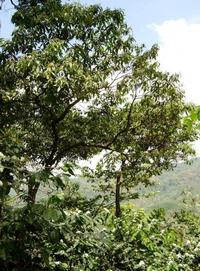
Scientists have developed a novel autopilot that guides aircraft through complex aerobatic maneuvers by watching the horizon as a honey bee does
-
-
Persistent undersea surveillance by autonomous robots
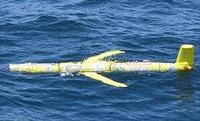
The U.S. military plans to deploy squadrons of air, surface, and undersea robotic vehicles later this decade, and wants to make these vehicles more autonomous; researchers develop an algorithm that helps sea gliders decide when to spend more time looking at regions that have changes in activity or environmental factors; without the control algorithm, gliders paid equal attention to all areas and acquired less information
-
-
Soft robots wiggle and worm in tight spaces

Researchers have demonstrated a unique class of locomotive robot: a soft robot, composed exclusively of soft materials, which is inspired by animals (for example, squid, starfish, worms) that do not have hard internal skeletons
-
-
Harvard-designed swarm robots licensed to Swiss company
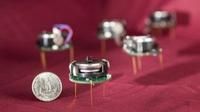
Harvard researchers developed Kilobot — a low-cost, easy-to-use robotic system for advancing development of “swarms” of robots; robot swarms might one day tunnel through rubble to find survivors, monitor the environment and remove contaminants, and self-assemble to form support structures in collapsed buildings
-
-
Jellyfish-like robot for underwater surveillance

Researchers at the Department of Mechanical Engineering at Virginia Tech built an unmanned underwater vehicle (UUV) inspired by jellyfish morphology and propulsion mechanism
-
-
The navigational skills of bacteria inspire robotics researchers

Humans may regret this, but bacteria have superior survival skills; bacteria are not the only organisms that travel in swarms — fish, bees, and birds also exhibit collective navigation; bacteria, however, have superior survival tactics and such tactics may be inspire better robot design
-
-
Tiny robot can survey hard-to-reach places
A flying robot the size of a dinner plate can zoom to hard-to-reach places; the tiny propeller-powered robots can be packed away into a suitcase; they have multiple cameras which enable them to see the world around them as they navigate their way through buildings
-
-
Anthropomorphic robot testing chemical protection
Boston Dynamics is showing its PETMAN — an anthropomorphic robot for testing chemical protection clothing used by the U.S. Army
-
-
Gecko-inspired tank robot has many applications
Researchers have developed a tank-like robot that has the ability to scale smooth walls, making it suitable for a range of applications such as inspecting pipes, buildings, aircraft, and nuclear power plants, and also for search and rescue operations
-
-
Sandia's rescue robot wins technology prize
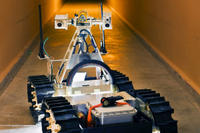
The remote-control robot contains color video cameras, a thermal imaging camera, microphones, and sensors that act as eyes and ears for rescue crews and provide air-quality information; two-way audio enables survivors to communicate with rescuers
-
-
Robotic car allows drivers to work while driving
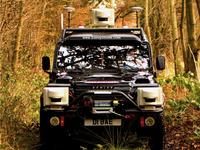
The overall cost of road congestion in the United Kingdom to business is likely to rise to £23-24 billion a year within the next fifteen years; increasing public transport capacity may help, but experts believe that, with people unwilling to give up cars, the solution is autonomous vehicles: they make road journeys safer, more efficient, and allow people to do work while on their way to the office
-
More headlines
The long view
AI-Controlled Fighter Jets May Be Closer Than We Think — and Would Change the Face of Warfare
Could we be on the verge of an era where fighter jets take flight without pilots – and are controlled by artificial intelligence (AI)? US R Adm Michael Donnelly recently said that an upcoming combat jet could be the navy’s last one with a pilot in the cockpit.
